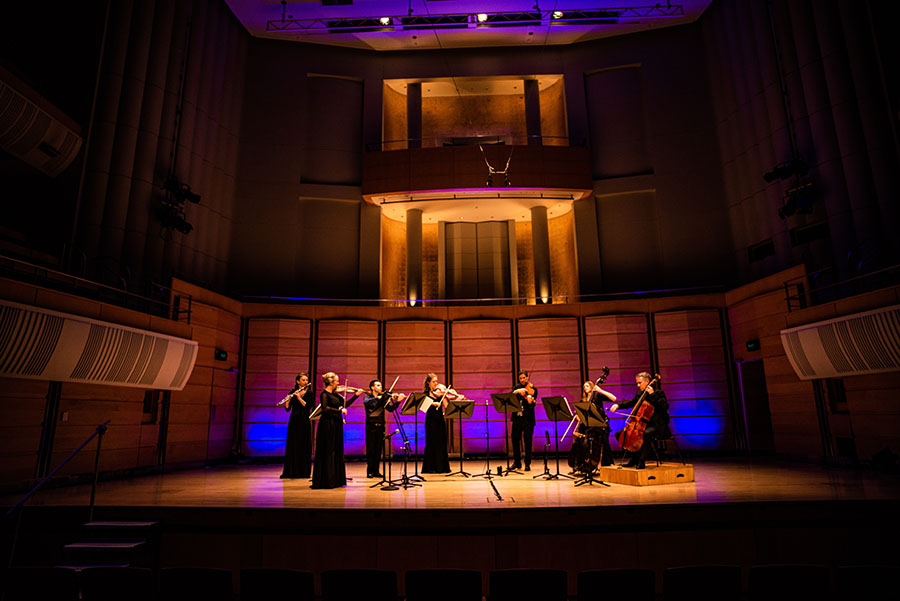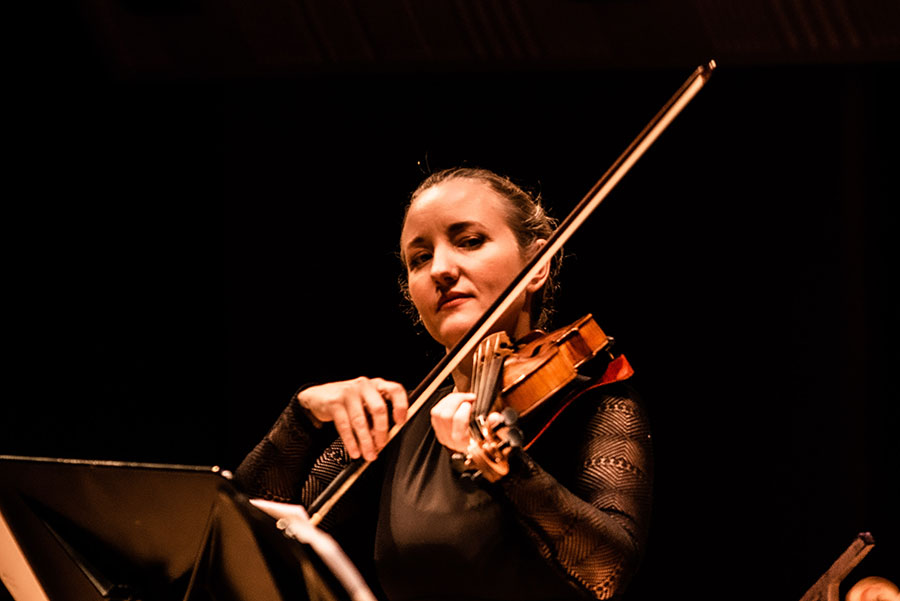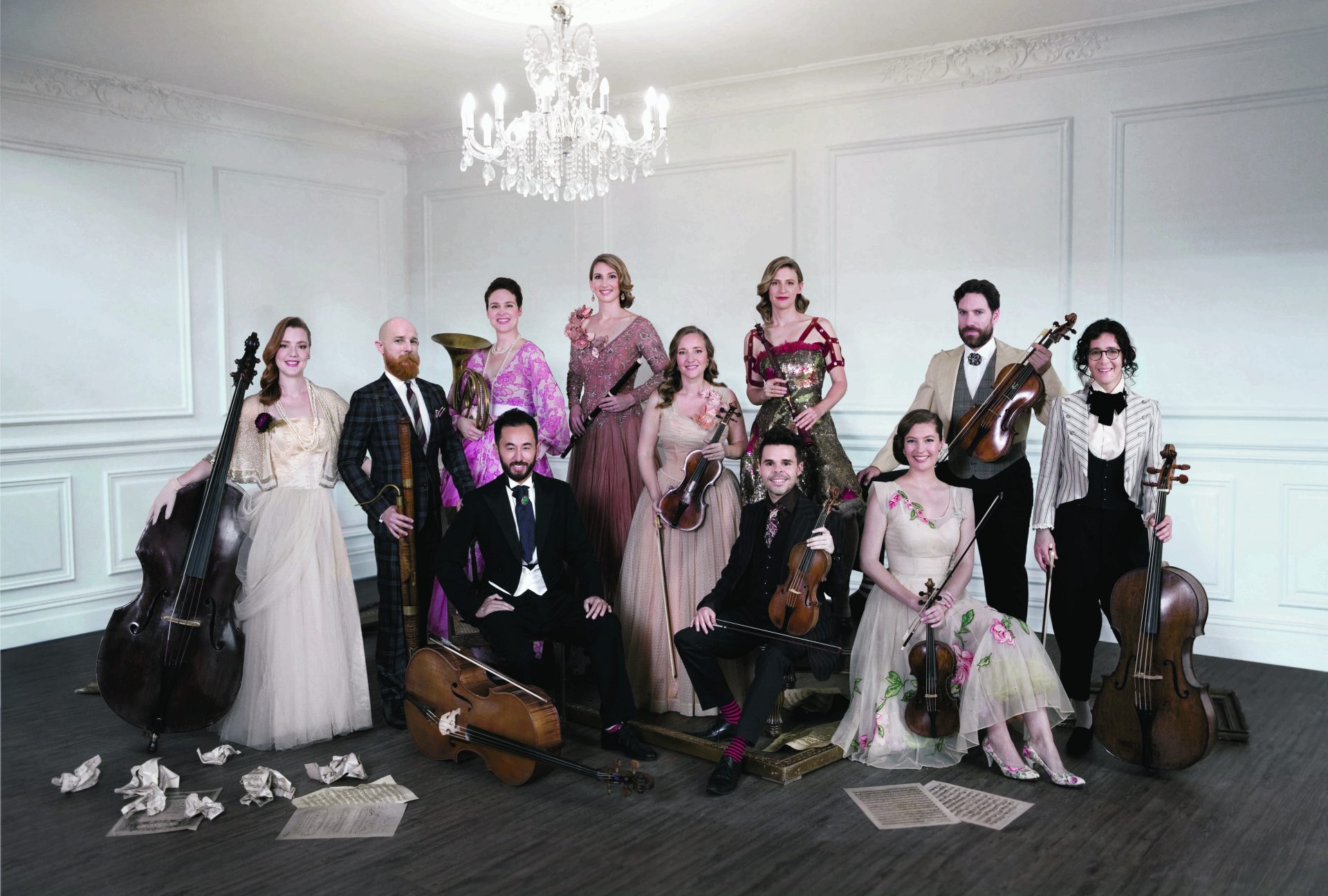Chamber arrangements reveal much about some beloved favourites, even if they do make you miss the originals…
In this concert the Australian Haydn Ensemble presented two arrangements of beloved works: Mozart’s ‘Haffner’ Serenade, K.250, and Beethoven’s Symphony No. 6, Op.68 ‘Pastoral’. Both were arranged for septet around 1810, and neither – according to Artistic Director Skye McIntosh – have been performed much at all since then, if at all.

Opening the program was Boccherini’s String Sextet in F minor, Op. 23 No. 4 G. 457, in its unaltered form. Written in 1776, it is emblematic of so much of Boccherini’s writing, with cosmopolitan influences ranging from his northern Italian upbringing to his active involvement in Vienna’s music scene and his position as compositore e virtuoso di camera (composer and chamber virtuoso) in the court of Don Luis of Aranjuez.
Boccherini is perhaps best-known for the ‘Fandango’ from his Quintet No.4 for Guitar and Strings, G.448, and this sextet certainly possesses some of the same dance-like qualities. A stately rhythm opened the first movement, ebbing and flowing between the higher strings, in particular between the violas of Karina Schmitz and James Eccles who were utterly in sync and sounding as one. This first section gives way to some extremely Haydn-esque moments, with Boccherini reflecting the tastes of European courts from Aranjuez to Mannheim with some passages demanding virtuosity from the violins. Skye McIntosh and Matthew Greco navigate these beautifully, intricately weaving their instruments to continue the dance theme. The second movement gives the lower strings more opportunity to drive the action, setting the pace and the tone while the violins flit about in the higher register. It is here that the AHE’s choice to perform this work with a double bass rather than two cellos pays off: the bass provides a greater depth of sound and texture, enriching the overall tone palette of the ensemble.
The third movement, marked ‘Grave assai’, is indeed solemn and reserved, a moment of reflection after the energy of the first two movements. The theme is passed around all the instruments, each having their moment of contemplation. But before long we are whisked away into the final movement, featuring some extremely cheerful and whimsical writing for the violins. McIntosh was the star of this final section, getting to play the bulk of the melodic material with occasional doubling from Greco for emphasis, while the lower strings drove the rhythm and propelled the piece forward. It all culminates in a lively ending – I think I even heard an eager ‘woo’ from the back of the audience a few bars before the finale.

As incredible as it may seem, Mozart’s ‘Haffner’ Serenade was effectively written as background music for the wedding of Marie Elisabeth Haffner, daughter of the wealthy Salzburg Haffner family and brother to Sigmund, a friend of Mozart’s. Originally scored for strings, winds and brass, this music was commissioned for the Haffners to show off their wealth through the number of musicians they could hire to play in the wedding band. The program note by Dr. Anthony Abouhamad argued that this arrangement by little-known Italian composer Giralomo Masi (1768–1834) is a rather revolutionary act. Masi has reworked the piece to be for string sextet and flute, thereby making it accessible to middle class musicians to perform in their home. The other remarkable thing about Masi’s arrangement is that he not only cut Mozart’s seven movements down to four, but he also wrote his own flute parts! While little is known about Masi, this act alone suggests he had some considerable chutzpah. The version performed tonight isn’t quite the full Masi version; McIntosh and Vi King Lim have reworked Masi’s version for performance by the AHE, putting a bit more of Mozart back into it.
The opening moments of this piece are a bit of a let-down. The assembled forces simply can’t replicate that trademark Mozartian wall of shimmering strings that open the orchestral version. But once the initial disappointment wears off, you realise how clearly you can hear each individual part. The sheer flurry of notes being played by Daniel Yeadon and Bonita Williams in the first movement is a revelation, and the other strings are working just as hard. The Ensemble have set out at breakneck speed, but the flute part played by Melissa Farrow gently floats over the top, a calming presence amidst the madness.
The second movement centres Farrow’s flute even more, giving that instrument sole responsibility for what in the original setting is taken by a far larger corps of woodwind and brass. The integration of the ensemble and the fullness of the sound here is quite impressive, and a testament to both the sensitivity of the arrangement and the performances of the musicians. There are moments here where all seven instruments sound as one; at other times it takes the form of a string sextet plus flute; at one moment in the third movement the ensemble shrinks to just Matthew Greco’s violin and Karina Schmitz’s viola, as they engage in a delightful pizzicato passage. The piece builds to a rousing and satisfying finale that puts paid to any suggestion that this chamber arrangement isn’t fully formed.
The arrangement of Beethoven’s Pastoral Symphony is a far more established one. It was completed by William Watts, an acquaintance of Beethoven’s who arranged all nine of his symphonies, and who as General Secretary of London’s Royal Philharmonic Society was an important champion of the music of the man from Bonn. Like Mozart’s Serenade it is arranged for two violins, two violas, cello, double bass and flute, and there is also very little evidence of it having been performed much at all since its creation.
As with the Mozart, what immediately strikes you about this arrangement is how clearly you can hear all the individual parts. The countryside that Beethoven invokes comes to life all around you, in the flute part that has never sounded more like birdsong, or the theme passing around the strings that feels like your senses awakening. The first three movements are utterly enchanting, the sound gleaming from each individual instruments like sunlight refracting through a spiderweb. The third movement in particular is full of life and joy, and you can almost see the countryfolk leaping about and celebrating the spring. And then the storm approaches, rumbling in the low strings as it moves closer and closer.
Unfortunately, it is here that the smaller forces of this chamber arrangement just cannot do justice to Beethoven’s writing. Seven instruments cannot match the sound of 70, so despite the intensity of the performance we get a shower instead of a storm. And then when the sun comes out at the start of the final movement, the brilliant intensity of that moment cannot be captured by the smaller ensemble. It is sweet, and delicate, and sensitively played, but it cannot achieve the catharsis that one feels when performed by a full orchestra. But rather than lamenting what it is not, beautiful playing from the Australian Haydn Ensemble makes you appreciate what you have.
It is interesting to note that the desire at the turn of the 19th century for chamber arrangements of famous orchestral works was driven by two main reasons: firstly, to create material for amateur musicians to perform in the home, and secondly as economical way of performing these beloved pieces when it was too costly to convene a full orchestra. In the post-COVID world these arrangements have found their place once more, as orchestras seek to program seasons knowing that an outbreak could restrict how many musicians are allowed on a stage. These scaled-down programs are also much cheaper and easier to tour, allowing organisations like the AHE to present concerts to audiences in areas where it would be prohibitive to take an entire orchestra.
These two works show that the right arrangements, performed beautifully, can be just as satisfying as the full experience.
